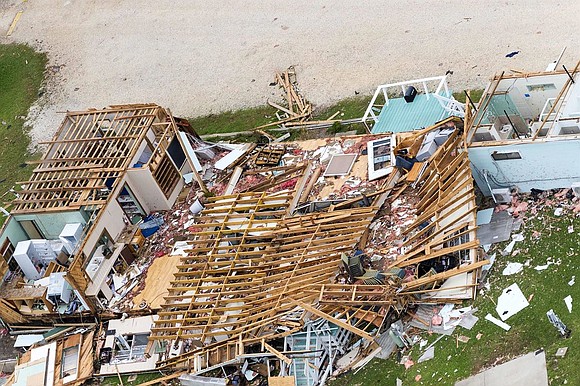The Financial Checklist: Tools and Strategies for Securing Your Finances After a Natural Disaster
Style Magazine Newswire | 9/6/2017, 8:48 a.m.
New York, NY: The nation has been watching in disbelief as Hurricane Harvey put over 32,000 residents in Texas shelters and damaged over 40,000 homes, and our hearts go out to those affected by the storms and flooding in Texas. We wanted to lend our expertise by putting together a list of basic but crucial steps for survivors to take in order to gain a stable.
Apply for Disaster Assistance
Hurricane Harvey may inflict as much as $30 billion in damages on homeowners, but only about 40% of that is expected to be covered by insurance. If you find yourself within a presidentially declared disaster area, you may qualify for federally funded disaster assistance that can help. Check out the Federal Emergency Management Agency (FEMA) by visiting their website at Fema.gov or calling 1-800-621-FEMA to see if you qualify for disaster assistance. You may qualify for special loans for homeowners, small business owners, or farmers that can help you repair and replace damaged property.
Visit www.disasterassistance.gov to learn more, but be mindful of the expected repayment plans on any SBA loans before applying. You may also want to reach out to a financial coach or a local nonprofit agency such as the American Red Cross to make the recovery process a bit less stressful, as they’ll be able to update you on your assistance status, provide resources you may not have thought of, and advocate for you throughout the process.
Assess Financial Standing
Calculate your monthly income and expenses. Download the free Change Machine Monthly Income and Expense sheet, or other free online tools such as this Monthly Budget/Spending Plan by the University of Minnesota Extension. You can also book an appointment with a free financial coach near you who can work with you to map out your necessary expenses, set a financial goal, and create a plan to move forward. You may contact lenders to ask for extensions on credit card payments or other loans, and a financial coach may be able to help you negotiate a temporary payment plan or grace period.
Contact Credit Card Companies
If you are unable to make your monthly payments, contact your creditors and apply for any available hardship programs that will temporarily suspend or lower payments, interest rates, and/or fees. This will help ensure your credit remains in good standing when you are back on your feet. Check your credit report for free at annualcreditreport.com, and be sure to lookout for any inaccuracies.
Secure State ID
Proof of identification, such as a driver’s license, birth certificate, adoption papers, social security cards, passports and citizenship papers are the single most important types of documentation to protect and take with you. In the event that you had to evacuate and weren’t able to take your ID with you, you should make it a priority to secure a new one, as a proper ID can help you successfully replicate other types of records. The Texas Department of Public Safety (DPS) is currently offering FREE replacement ID to residents who were affected by Hurricane Harvey. You can also work with your local DMV.
Reach out to Vendors and Utility Companies
Information is critical during catastrophic events and emergencies. When you are worrying about your family, your pets, and your personal safety, calling your cable or internet provider is understandably not going to be the highest priority on your list, but once you are safe and ready to begin the rebuilding process, calling all of your creditors, vendors and utility companies will help you stay on top of your finances. If you’ve lost power and are without electricity, your local utility company may also be able to recommend resources that can help and keep you informed of the latest updates. To start, review your recent bank statements and make a list of all of the companies you’ll need to call.
Do an Insurance Check
Ask for copies of your insurance policies so that you can read through them thoroughly and get a grasp on everything they do and do not cover. If your car, home or property was damaged, report the damage accordingly, and don’t forget to keep a detailed list of the damage and take photos. To locate a bank or institution’s federal regulator, call the FDIC toll-free at 1-877-ASK-FDIC. To locate your state’s insurance regulator, go to the National Association of Insurance Commissioners (NAIC) website. The Texas Department of Insurance has a running list of storm resources and office closures located under ‘Help after Harvey’.
Start to Rebuild
Reach out for support, there are groups available to help if you are dealing with an individual or family crisis. (Hurricane Harvey Relief Fund, Global Giving, United Way of Greater Houston, the Center for Disaster Philanthropy, The Salvation Army, Samaritan’s Purse, Coalition for the Homeless/Harris County, Houston Food Bank, Galveston Food Bank, and Feeding Texas - just to name a few.)
Check out the Consumer Financial Protection Bureau’s (CFPB) Checklist to Rebuilding Your Finances. (Also worth a read are their tips on watching out for fraud as you rebuild.)
Stay in touch with your creditors to avoid any penalties, interest charges, or future damages to your credit score.
Make an appointment with a financial coach near you if are feeling overwhelmed and would like someone to help you get your finances back in order. The Financial Clinic has Change Machine financial coaches across the country, reach out to us to find a free financial coach near you. They can also help you build up your emergency savings and open up free accounts.




